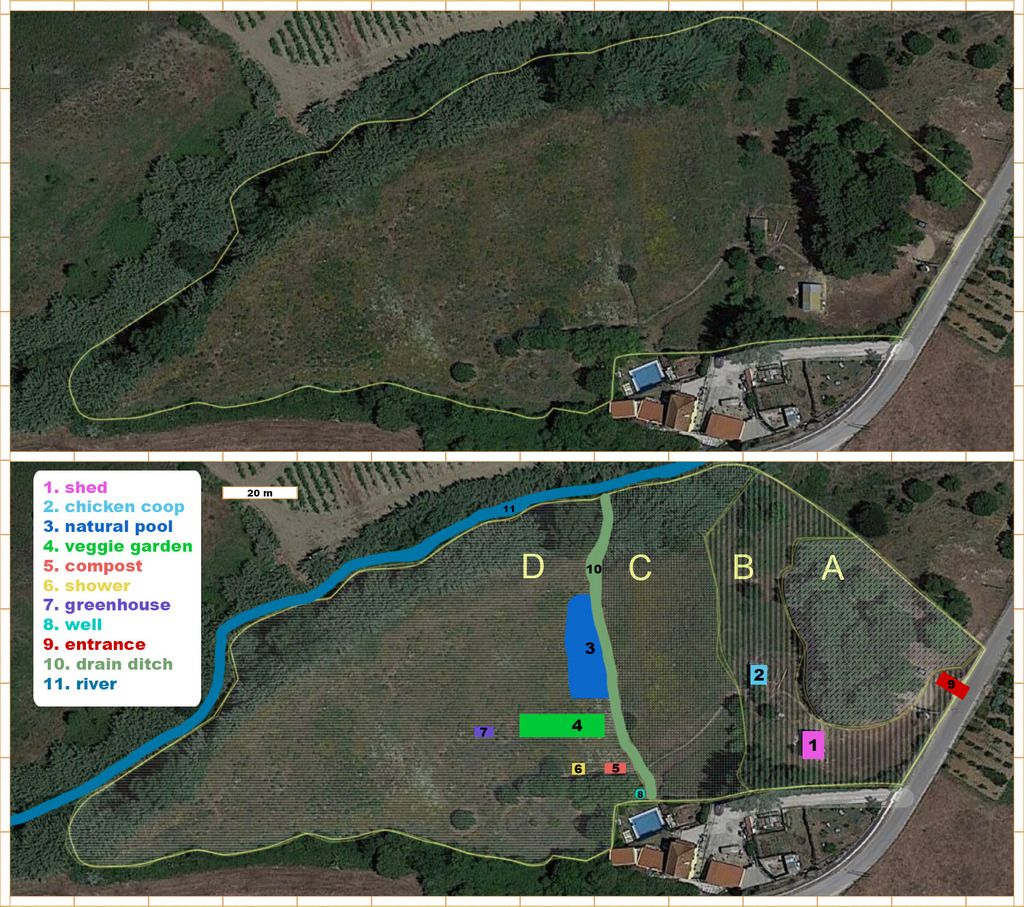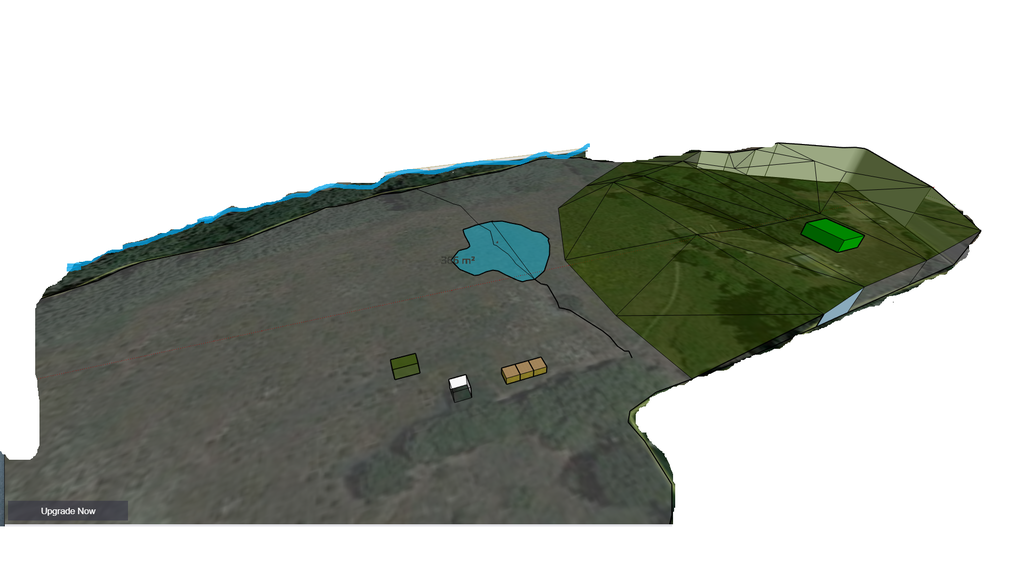






 1
1




Creating edible biodiversity and embracing everlasting abundance.
 2
2




 1
1




Creating edible biodiversity and embracing everlasting abundance.




Hugo Morvan wrote:Sounds great to me! I don’t have a PDC so i don’t really get this zoning thing. But get the pond as high up as you can on your land. Water, water, water.There was this fellow a week ago on permies who used a hoop house to fill a pond with, high up his land. Then have additional ponds and wetter zones down the land. Or maybe even a natural swimming pond.
A hoop house prolongs the season as well as it will give you early salad and tomatoes.
Look into green manures as well to make your land more fertile. Maybe get acacia robinia on the go to fix nitrogen in root nodules. And chop and drop.
Learn from the other portuguese permies what grows locally as well. Things like comfrey, bio accumulators, but then locally.
Maybe get a chicken tractor on the go or ducks.
 2
2




Idle dreamer




 1
1




"The rule of no realm is mine. But all worthy things that are in peril as the world now stands, these are my care. And for my part, I shall not wholly fail in my task if anything that passes through this night can still grow fairer or bear fruit and flower again in days to come. For I too am a steward. Did you not know?" Gandolf
 2
2






"Nobody made a greater mistake than he who did nothing because he could do only a little" - Edmund Burke
"Pelo menos uma vez na vida precisamos de um advogado, um médico, um arquiteto, mas 3 vezes por dia precisamos de um agricultor."




Lugar Rocha wrote:Hello Permies

I'm Paulo of Lugar da Rocha, and new on the permies.com.
Philippe, by indications, descriptions, map and a sketch of the topography, your property is almost a paradise, congratulations!
I think we are almost neighbors, because Lugar da Rocha is located in Arruda dos Vinhos, 20 km's north of Lisbon. - Can you confirm?
All good
Paulo - Lugar da Rocha

 1
1








Mike Homest wrote:Looks great, as for micro-hydro:
Micro-Hydro is about head and flow. Head means from which height your water flows (in a tube) and low how much water/time, mostly l/s.
The key equation to remember is the following:
Head x Flow x Gravity = Power
So you need at least either much head or much flow.
Example, 40 m head and a flow of 3l/s:
40m x 3l x 9.81 m/s² = 1117 W
Presuming you have 50% total efficiency meaning you get about 588 W out.
Now if you had a creek supplying 6l/s (one should not take more then 50%, so you "use" 3 l/s) with those 40 m head that would make a great hydro-power system, generating about 14 kWh daily, usually 365 days.
In general mycro-hydro is much cheaper to set up then solar (PV), provides power 24/7 and quite often you have the highest water flow when you need the most energy. Also set up as above wouldn't need much (expensive) batteries.
In any case you should see if it is possible to set up a gravity feed water system. You gain 1 bar pressure with each 10 meters. So only 25 meters will leave you with about a bit over 2 bar (rest lost due to friction in tubes/etc). That is usually enough for household usage as well as irrigation, though a bit more would be great, but then zou have to use what is avilable. And gravity feed water supply doesn't need electricity or/and complicated things.
 1
1




Bom dia Paulo!
Yes, we live extremely close to each other! A 5 minute drive I estimate.
Can you tell me something about your project, please? I'm very curious



"Nobody made a greater mistake than he who did nothing because he could do only a little" - Edmund Burke
"Pelo menos uma vez na vida precisamos de um advogado, um médico, um arquiteto, mas 3 vezes por dia precisamos de um agricultor."
 1
1




Lugar da Rocha wrote:
Bom dia Paulo!
Yes, we live extremely close to each other! A 5 minute drive I estimate.
Can you tell me something about your project, please? I'm very curious
My English is a little poor / rusty, but I will do my best!
Lugar da Rocha, have 12000 m2, and means boulders/rocks place.
As been abandoned / without human action for fifteen years.
Has three terraces, but not very defined.
The entrance to Lugar da Rocha and a small flat area to park two or three cars is located at the north side and lower altitude.
Near the entrance is localized a small dam - this year without water
And nearbye/next the small dam there are two small vegetable gardens.
More a less in the center of the land, there are two very small sheds, one for pack things up, the other for firewood and wood/timber.
We collect the rainwater from the roofs of the two sheds.
The electricity comes from a neighbor who is connected to the electricity grid.
There are many autochthonous trees and shrubs, as:
Carvalho-Cerquinho - QUERCUS FAGINEA;
Sobreiro - QUERCUS SUBER;
Freixo - FRAXINUS ANGUSTIFOLIA;
Loureiro - LAURUS NOBILIS;
Pilriteiro - CRATAEGUS MONOGYNA;
Oliveira - OLEA EUROPAEA;
Abrunheiro - PRUNUS INSITITIA;
Abrunheiro-bravo - PRUNUS SPINOSA;
Aderno-de-folhas-largas - PHILLYREA LATIFOLIA;
Aroeira - PISTACIA LENTISCUS;
Carrasco - QUERCUS COCCIFERA;
Sanguinho-das-sebes - RHAMNUS ALATERNUS;
Mata-boi - BUPLEURUM FRUTICOSUM;
Giesta Pascoinha - CORONILLA GLAUCA;
Alecrim - ROSMARINUS OFFICIBALIS;
Salsaparrilha-do-reino - SMILX ASPERA;
Silva - RUBUS ULMIFOLIUS;
And some fruit trees, as:
Marmeleiro - CYDONIA OBLONGA;
Pereira - PYRUS COMMUNIS;
Ameixeira - PRUNUS DOMESTICA;
Nespereira - ERIOBOTRYA JAPONICA;
Macieira - MALUS DOMESTICA;
The googlemaps image from 2017 (the current one) does not represent what exists at present, but it gives a general idea.

All good
 If you want you can add me on FB.
If you want you can add me on FB. 1
1




Growing on my small acre in SW USA; Fruit/Nut trees w/ annuals, Chickens, lamb, pigs; rabbits and in-laws onto property soon.
Long term goal - chairmaker, luthier, and stay-at-home farm dad. Check out my music! https://www.youtube.com/@Dustyandtheroadrunners




Dustin Rhodes wrote:Nice plan!
I don't see a house listed in the design - are you planning on commuting to your plot(or is it tucked under the trees in the picture)?
If so, you're going to want to beef up fencing and other protection measures, as you can't respond to animal(or human) pests in the heat-of-the-moment.





"Nobody made a greater mistake than he who did nothing because he could do only a little" - Edmund Burke
"Pelo menos uma vez na vida precisamos de um advogado, um médico, um arquiteto, mas 3 vezes por dia precisamos de um agricultor."




Philippe Elskens wrote:
Many thanks for explaining!!!
I have no idea yet what my Head and Flow are exactly. Our part of the river is 150-200 meters long, but the height difference between begin and end point is minimal. I'll try to get an estimate for Flow using the float method, since there are no waterfalls and it will take some time before I could construct a dam for a more accurate bucket method. I've only seen the river once and it was 2 meters across, 1 meter deep, but I have no idea how much less this will be in the dryer months of the year. Also, there's the fact that it's located 2 meters below the land, which makes it more difficult to use gravity-powered methods of pumping water. But electricity production is definitely on the table!!

|
How do they get the deer to cross at the signs? Or to read this tiny ad?
Freaky Cheap Heat - 2 hour movie - HD streaming
https://permies.com/wiki/238453/Freaky-Cheap-Heat-hour-movie
|







